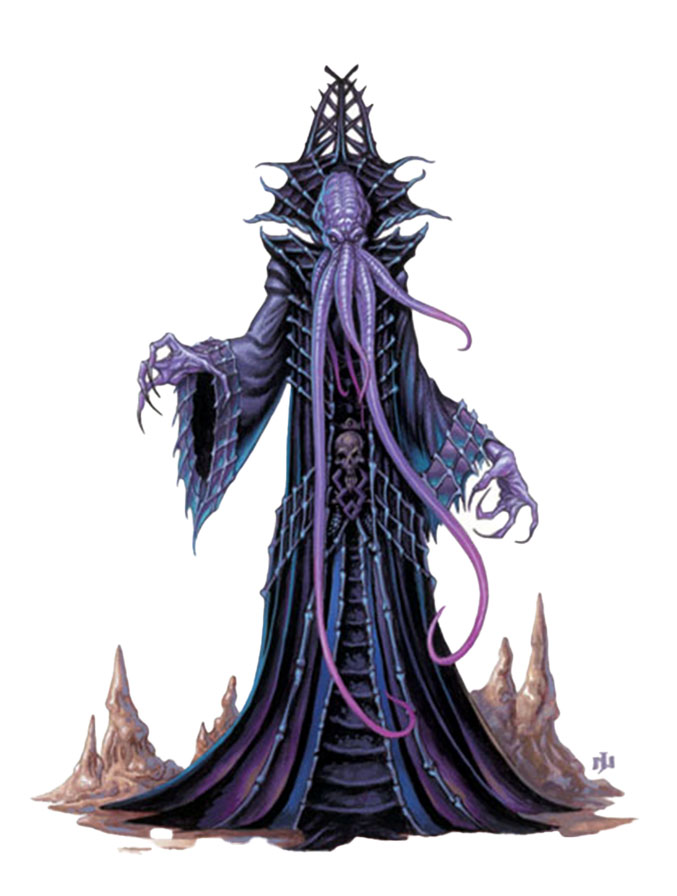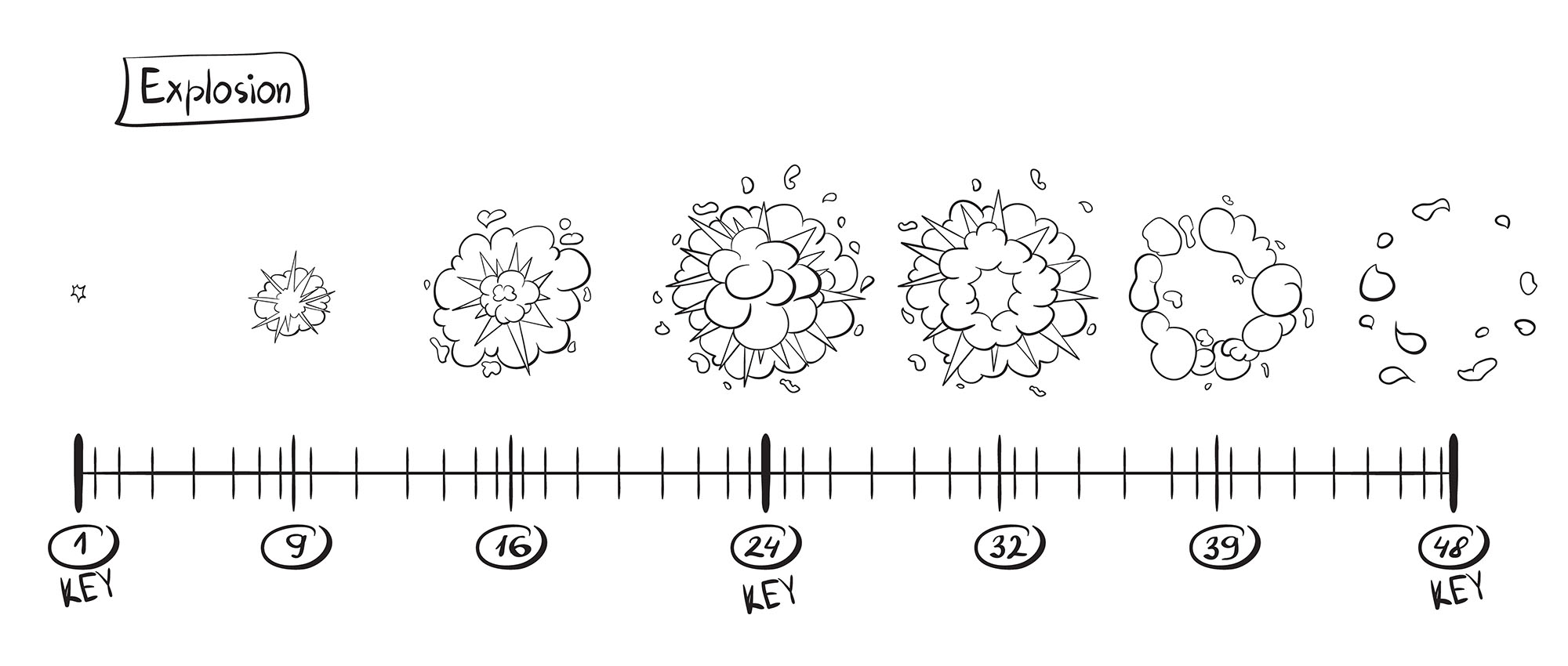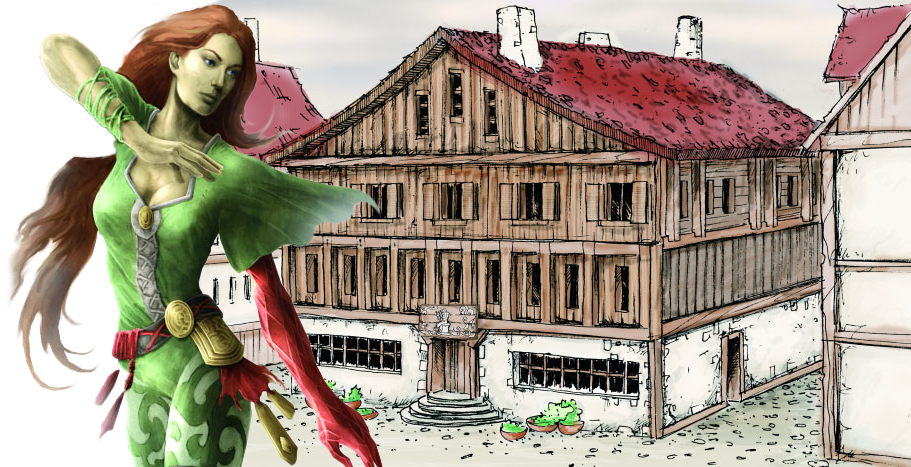The world of your RPG campaign is filled with a legion of characters, and the key to every great D&D game is bringing this vast cast of characters to vivid life. USA Today Bestselling Author and ENnie Award-winning RPG designer Justin Alexander shares his secret weapon for mastering every character.
Archive for the ‘Roleplaying Games’ category
Advanced Gamemastery: Universal Roleplaying Template
Advanced Gamemastery: Dungeon Clues
Are you dungeons boring? Are you ready to take the next step in your journey to become a true Game Master? USA Today Bestselling Author and ENnie Award-winning RPG designer Justin Alexander will help you bring your dungeons to life by revealing the hidden secrets of dungeon clues!
The first installment in our new series on Advanced Dungeons!
Ptolus: Running the Campaign – Ambushing Your Timelines
DISCUSSING
In the Shadow of the Spire – Session 35C: Ambush in the Banewarrens
“My friends! To arms! To arms!”
“There’s something wrong!” Tee took off running down the hall.
Agnarr and the freshly boot-enhanced Tor both passed her easily in the race out of the Banewarrens. Coming back up the tunnel leading to the antechamber, however, they came up short in front of a wall of seemingly impenetrable darkness. A few moments later, the others caught up to them. Even Tee’s elven vision couldn’t penetrate its unnatural depths. And everything beyond it was eerily silent.
Then Tee heard heavy footsteps approaching them from out of the darkness… but as those footsteps emerged into the passage, there was still nothing to be seen. Tee whipped her dragon pistol up and fired.
The shot missed.
I’ve previously discussed prepping scenario timelines. The short version is that when you have an evolving situation in your campaign and you’re not sure exactly when the PCs will re-engage with it, the best way to prep that situation is often a timeline of upcoming events — e.g., on the 18th the bad guys will rebuild the south wall; on the 19th the bad guys will hire mercenaries to reinforce the compound; on the 20th they’ll hire an assassin to hunt down the PCs; etc.
When the events from this timeline would directly intersect the PCs, I’ll copy the appropriate entry into the Events section of my campaign status document.
Which leads us to the current installment of the campaign journal.
As I mentioned last week in Running the Campaign: Weaving the Background, the events described in this installment of the campaign journal are being driven by this Event:
09/18/790 (11 PM): GQT2 comes to Nibeck Street mansion. (BW Status)
To decode that a bit:
- GQT2 stands for Grail Quest Team 2. The grail quest teams are dispatched by the Pactlords of the Quaan to find the Black Grail (which they believe lies within the Banewarrens). After the PCs wiped out GQT1, the Pactlords assembled a second team to send in.
- BW Status means “Banewarrens Status.” This is a cross-reference to another section of the campaign status document where I’ve collected all of the Banewarrens-related updates, events, etc. (In addition to the GQT2 material in this section, at this time there were also sub-sections tracking the Malignant Crystal, Umber Hulk, and Thought Stalker.)
So this entry is:
- Letting me know that something is happening in the campaign world that might be immediately significant to the PCs. (Because (a) they have an alarm spell in the Banewarrens and/or (b) they might be in the Nibeck Street mansion, Kalerecent’s cave, or the Banewarrens themselves and directly interact with the Pactlords.)
- That there’s additional details about this event that I should reference in “BW Status.”
And if we flip over to “BW Status,” here’s the full entry on the GQT2:
GQT2:
9/18/790 (5 AM): [SPOILER] arranges for Kularas’ escape. Kularas returns to the Belfry.
09/18/790 (11 PM): The GQT2 + Kularas goes to the Nibeck Mansion and scouts carefully, trying to determine if the PCs are present.
- If they are, they’ll pull back to the mansion and lay an ambush (which they’ll flee from quickly if it appears to be going badly). If forced to abandon the ambush, they’ll put a watch on the mansion and then go in when the PCs are known to have left.
- If they aren’t, they all attack Kalerecent and move into the Broken Seal area. They’ll stay in the Broken Seal area until late on 9/19/790, trying to figure out some way through the Sealed Door. They’ll check back every two days until 9/29/790, when they’ll return with another wish spell to open the door (which they’ll go through, knowing that Kikanuile has a ring to get them back out).
If they learn of the Banewarrens’ key from [SPOILER], they’ll start trying to figure out where it might be, too. This will eventually lead them to Alchestrin’s Tomb. (With their resources, they’ll actually know that Alchestrin had the key at one time.)
The last paragraph here are, as you can kind of see, just notes I’ve made about potential future actions of the Pactlords. I haven’t taken time to work these out in detail, however, because I think it’s likely that the PCs will interact with the Pactlords — directly or otherwise — on the 18th, which will change the direction of everything that comes after. (There’s no sense wasting time prepping a bunch of stuff that will just get thrown away.)
So how do you know how far ahead you should prep? Honestly, that’s as much art as science. You’re partly making a best guess about what the players will want to do. (In this case, I think it’s very likely that they’ll be coming back to the Banewarrens sooner rather than later.) And, if in doubt, you can also be guided by how far you think the PCs could conceivably get in the next session. (It’s incredibly unlikely in the In the Shadow of the Spire campaign, for example, that we’re suddenly going to start rushing through multiple days in a single session, so if I have any doubt about how things might turn out, there’s little reason to push a timeline out more than 1-2 days in advance.)
Ideally, though, you’re looking for the event horizon: The point beyond which you know that you can’t see the outcome.
And this session is a great example of exactly WHY you want to find the event horizon: Because the PCs will inevitably blow up your timeline.
BLOWING UP THE TIMELINE
And that’s OK. The reality is that these timelines are designed to be blown up.
In this case, though, I definitely thought I knew how these events were going to play out: I thought it was actually very unlikely that the PCs would be in the Banewarrens at 11 PM when the GQT2 showed up. In their discussions they’d put a little too much faith in their alarm spell to warn them of trouble while they were looking for the Banewarrens’ key and:
- that alarm wouldn’t warn them if Kalerecent was attacked; and
- I already knew they were actually spending most of their time outside range of the alarm
So I figured the outcome here was pretty inevitable: Kalerecent, the lone guardian of the Banewarrens, would be ambushed by the Pactlords, hopelessly outclassed, and killed. Which would be great, because it would leave the Banewarrens unguarded, allowing all the different factions interested in the Banewarrens or about to become interested in the Banewarrens — the Pactlords, the Vladaams, the Church, etc. — to send in delving teams, transforming the dungeon into a dynamic and ever-evolving landscape that the PCs would find altered every time they returned.
I didn’t know exactly when the PCs would figure out that the Pactlords had killed Kalerecent and breached the Banewarrens again (which is why I positioned the timeline event horizon where I did), but I knew where the campaign was headed.
… except, of course, I didn’t.
Because the players looked over their notes, looked at the map of Ptolus hanging on the wall, and abruptly realized what I had realized: The alarm spell has a 1-mile radius, and the Ghostly Minstrel — where they slept at nights — was just outside the range.
They panicked and assumed they were already too late: The alarm had probably already been triggered, Kalerecent was dead, and who knew what terrible things were happening in the Banewarrens.
And so they immediately decamped to go see how bad things had gotten.
Except I looked at my campaign clock: They’d realized their error literally an hour before the Pactlords returned. So they checked in, saw everything was fine, recast the alarm spell, and then… stood around chatting about things.
As a result, they were just a couple rooms away when the Pactlords ambushed Kalerecent and the PCs were able to drive off the Pactlords and save Kalerecent.
THIS CHANGES EVERYTHING
Looking back on this 150+ sessions later, the impact this had on the campaign is kind of mind-boggling to me.
Not only did Kalerecent not die here, as I had felt so sure he would, he’s still alive today. The PCs arranged for other knights of the Order of the Dawn to join him in his watch, and made sure they had the supplies and resources they needed to keep the Banewarrens sealed.
Rather than a multi-party dynamic dungeon crawl (although there’s still a bit of that), the story of the Banewarrens in my campaign has instead largely been a bloody and inventive siege. (With, if I do say so myself, some incredibly clever play on both sides of the table.)
Not only have the defensive forces grown and multiplied, but the decision to bring in more members of the Order of the Dawn tangled the Banewarrens even more deeply into the politics surrounding the schism of the Church.
Eventually some of these knights would actually become PCs played by a second group of players running in tandem with the original group!
Of course, the alternative to all this would have been for me to simply decree:
The next time the PCs come to the Banewarrens, the Pactlords have killed Kalerecent.
A static, linear, guaranteed outcome.
But, honestly, where’s the fun in that?
Campaign Journal: Session 36A – Running the Campaign: Using Rituals
In the Shadow of the Spire: Index
In the Shadow of the Spire – Session 35C: Ambush in the Banewarrens

SESSION 35C: AMBUSH IN THE BANEWARRENS
January 5th, 2009
The 18th Day of Kadal in the 790th Year of the Seyrunian Dynasty
JEVICCA AWAITS
When they returned to the Ghostly Minstrel late that night, they found Jevicca drinking in the common room. They greeted her with friendly cheer and, a short while later, went up to Elestra’s room.
Once they had reached that (relatively) secure privacy, they turned quickly to the business before them: They told her about the warding generator, the sealing properties of the walls, and the presence of the bone-ring wearers who were apparently responsible for breaching the Banewarrens.
Jevicca inspected the ring they had given her. “There are binding magicks, warding magicks, and geas magicks at work here. But they are all intertwined and well obscured. May I take this with me to have it properly studied?”
“Sure,” Tee said. “I’ve got plenty of them.”
“I wouldn’t recommend trying any of them on.”
“Yeah, we figured that out for ourselves.”
Jevicca paid each of them the 1,000 gold pieces she had promised. Then she made them a new offer: “The Inverted Pyramid wants the Banewarrens sealed.”
“I don’t know if we can do that,” Ranthir said. “It would take me weeks to work out how to repair the warding generator… if it’s possible at all.”
“I’ll see if I can get help from the Pyramid for that,” Jevicca said. “But the important thing is the creature that penetrated the inner door. If she’s still inside, she could break the seals again and escape – leaving the Banewarrens open behind her.”
Jevicca offered each of them a payment of 2,000 gold pieces or a custom-made mage-touched item worth twice that much if they could track down and remove or kill the invader. After a brief discussion, they agreed. (In many ways it was an easy decision: They wanted the Banewarrens closed just as much as the Inverted Pyramid did. They might as well get paid for doing it.)
Jevicca had also been busy researching. She was able to tell them of three significant historical efforts to penetrate the Banewarrens: Alchestrin, a former Lord of Castle Shard, studied the Banewarrens extensively. He was almost certainly the most knowledgable person in the modern era when it came to the subject.
Sokalahn was a powerful sorcerer of pre-history who spent years or possibly even decades attempting to breach the wards around the Banewarrens. In the casting of a powerful ritual towards that end he met with a spectacular failure – great energies were spun forth which twisted into pools and eddies called the Pits of Insanity. “These pools of pure chaos,” Jevicca said, “Were scattered throughout the subterranean areas around the city, playing havoc with physical laws and magical powers.”
Elestra shuddered.
“Ghul also made many attempts, few of which were documented – but all of which failed. He eventually came to believe that the secret of overcoming the magical wards might lie with the arts of chaositech.”
AMBUSH IN THE BANEWARRENS
They returned to the Banewarrens to renew the spell of alarming they had placed on the door. On the way, they realized they had become careless: The Ghostly Minstrel lay outside the range of the spell, and yet they had gone there several times that day. At the thought, their hearts became ill at ease.
Fortunately, Kalerecent greeted them cheerfully in the excavated antechamber.
“Is everything all right?”
“All has been quiet here.”
“Are you sure?”
“Yes. Why? Has the alarm been triggered?”
“Err… No. Not at all.”
And, in fact, it had not. With their fears temporarily allayed, they headed down into the Banewarrens themselves. Ranthir cast a new alarm on the sealed door and they began chatting idly about their affairs: They decided to go to Mahdoth’s Asylum the next day to follow-up on the letter Ranthir had received. They considered different ways of fulfilling Jevicca’s new assignment. (“We should just lay siege here. She has to come out eventually.”) They also considered what should be done about the chaos temple in Oldtown and the other two temples they knew of in the Temple District.
And then Tee’s sharp ears caught it: “My friends! To arms! To arms!”
“There’s something wrong!” Tee took off running down the hall.
Agnarr and the freshly boot-enhanced Tor both passed her easily in the race out of the Banewarrens. Coming back up the tunnel leading to the antechamber, however, they came up short in front of a wall of seemingly impenetrable darkness. A few moments later, the others caught up to them. Even Tee’s elven vision couldn’t penetrate its unnatural depths. And everything beyond it was eerily silent.
They fidgeted, unsure of what they should do. Tor was skilled in the arts of blind-fighting – having practiced his swordcraft on many moonless nights – but without any idea of what might lay within the darkness it didn’t seem wise to go rushing in. (Although Agnarr firmly endorsed the “rushing in with both eyes shut” plan.)
Then Tee heard heavy footsteps approaching them from out of the darkness… but as those footsteps emerged into the passage, there was still nothing to be seen. Tee whipped her dragon pistol up and fired.
The shot missed.
A blue-skinned ogre with dark runes etched across its temples appeared out of thin air, swinging its massive sword. It caught Tee flat-footed and sent her stumbling backwards down the passage.
Dominic was completely exhausted by this point (it had been an impossibly long day), but he somehow dredged up the strength to draw once more upon his divine power and let it flow into Tor. Tor was gleeful to feel himself grow in the same way that he had seen Agnarr do so many times before, and even before the transformation was complete his sword had lashed out, striking the ogre with two quick blows.
Dazed and surprised, the ogre raised his sword to parry and cried out—“Yuinthu! They’re stronger than we thought! I need—“
And then Tor, with one last plunging thrust of his blade, killed the creature.
The ogre fell.
And the darkness fell with it.

To one side of the antechamber, another half-leonid creature crouched – seemingly shocked by the sudden return of the light. She had a slightly different countenance than the others they had fought, but was clearly of similar nature.
And to the other side of the chamber stood a tall, purplish-skinned humanoid with a mouth of frothing tentacles and slitted, milky-white eyes.
Ranthir recognized this latter creature as a “flayer” from vague references in ancient texts – and something about “feasting upon the brains of the living”.
 “Don’t let it eat your brains!” Ranthir cried out in warning.
“Don’t let it eat your brains!” Ranthir cried out in warning.
“That doesn’t sound good,” Dominic muttered.
Tee moved forward to get a better shot at the betentacled creature, but as she moved into the antechamber two huge spiders dropped from the ceiling.
“Look up! Why do we never look up when it matters?!” Tor cursed in frustration.
Tee, for her part, barely managed to roll backwards down the tunnel – although she still received a nasty, slashing cut that burned painfully from the spider’s venom.
“Yuinthu!” the leonid cried. “We need to get out of here!” She bounded forward, leaping through the air and landing atop Tor – all of her claws raking painfully into this chest while her jaws sank deep into his shoulder. Her claws dug into his flesh as she bunched her legs and leapt back into the room, sending Tor staggering backwards.
While Tor was still trying to recover, Yuinthu – with a strange and alien gait – shambled forward and laid his hands upon the leonid. The leonid, in turn, laid her paws upon the ogre and the spiders both reached forth claws to touch the sphinx—
And they vanished.
RANTHIR AND THE DREAMING APOTHECARY
Dominic rushed to Kalerecent’s side, finding the knight still breathing shallowly. With a burst of holy energy, he got him back on his feet.
“You drove them off?”
“More or less,” Tee said.
“The ogre appeared out of thin air.”
“They disappeared that way, too.”
Ranthir had detected a slight aura of planar magic in the flayer’s escape spell. He suggested that they might be able to trace their teleport and proposed that they ask Jevicca to do it for them…
… which is when they realized they had no way of contacting her.
Knowing that Jevicca had contacts with the Dreaming Apothecary (because she had given their token to Elestra), Ranthir took the Apothecary’s token from Elestra and raced back to the Ghostly Minstrel. When he failed to find Jevicca in the common room there, he headed up to his room and placed the token under this pillow. In his excitement it took him some time to drift off to sleep, but he finally managed it.
When he awoke to find the representative of the Dreaming Apothecary in his room – dressed in cloth-of-gold and with her long, blond locks drifting through the air – and explained that he was trying to contact Jevicca.
The representative of the Dreaming Apothecary was unamused. “We are not a messenger service.”
Ranthir rapidly backpedaled, instead placing an order for a magical headband that would aid his arcane researches and making arrangements for payment.
The representative agreed to the commission, but then she raised her finger. “However, for your impudence, tonight your dreams shall be plagued with discontent. Do not forget this lesson, mage. We are not to be trifled with.”
The room was instantly swallowed in blackness and Ranthir felt himself thrown heavily backwards into his bed.
When he opened his eyes again, he found himself standing upon a crowded street at high noon. But there was something wrong with the faces of the people around him – they seemed indistinct, blurred, warped. His eyes could neither focus on them nor ignore them. The entire scene was deeply unsettling…
And then there were gasps of fear and cries of terror. His head snapped up. The surface of the sun was… festering. Green and black sores were spreading across its surface like cancerous growths. The sun was dying. And then a whisper, like a long-dead voice snatched by the wind, caught at his ear—
“…an age of endless night has come…”
He lurched awake to find himself in his own bed once again.
Running the Campaign: Ambushing Your Timelines – Campaign Journal: Session 36A
In the Shadow of the Spire: Index
In Translation: Dragon Heist Remix!
Due to the prodigious efforts of 子奇, the complete Alexandrian Remix of Dragon Heist is now available in a Chinese translation.
I can’t read a word of it (more’s the pity!), but I am simply blown away by the stupendous effort which went into this project.
Archives
Recent Posts
- Ex-RPGNet Review: The Malady of Kings
- Advanced Gamemastery: How to Run Horror RPGs
- The Vladaam Affair – Part 16E: Slave Trade Handouts
- Ex-RPGNet Review: A Lion in the Ropes
- Ptolus: Running the Campaign – Contract Handouts
Recent Comments
- on Game Structures – Part 16: Player-Known and Unknown Scenario Structures
- on Shitty People Are Everywhere
- on Ptolus: Running the Campaign – The Undead Sequel
- on Review: Heroes of the Borderlands (D&D Starter Set 2025)
- on Review: Heroes of the Borderlands (D&D Starter Set 2025)
- on Thought of the Day: Elven Teeth
- on In the Shadow of the Spire – Session 48A: A Night in the Necropolis
- on The Art of the Key – Part 4: Adversary Rosters
- on Random GM Tip – Running Background Adventures
- on In the Shadow of the Spire – Session 47C: Home Suite Home















